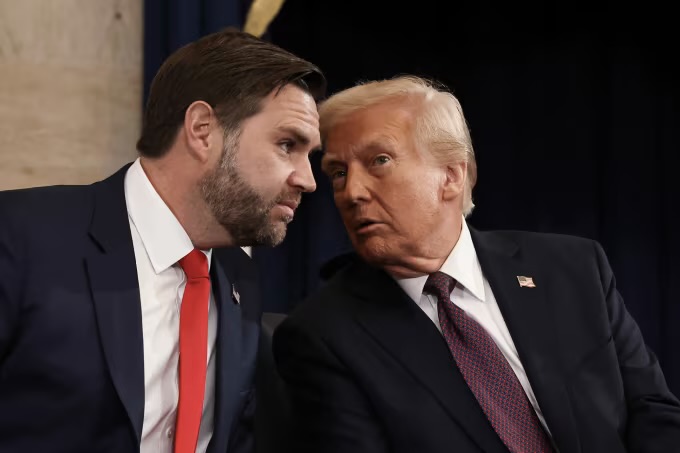Trump’s latest policy 180 on the war in Ukraine could strike deep into Russian territory


London — It’s such a stark change, it is perhaps forgivable the messaging is garbled.
US President Donald Trump is considering supplying Tomahawk missiles to Ukraine, according to his Vice President JD Vance.
“We are having conversations this very minute about that issue,” Vance told “Fox News Sunday,” adding Trump will make a “final determination.”
Trump’s envoy to Ukraine, Keith Kellogg, said the same day he believed Ukraine had the authorization to strike deep into Russia. “Use the ability to hit deep,” he said. “There are no such things as sanctuaries.” Kellogg later clarified his remarks as only referring to public statements from Vance and US Secretary of State Marco Rubio, and not a fresh insight into White House thinking. But Trump’s team are either seriously considering supplying Tomahawks – whose very nature means they are really only for long-range strikes into Russia – or they want everyone to think they are.
Forty-three days ago, Russian President Vladimir Putin was walking on a red carpet into The Beast in Alaska. But now the Kremlin are having to respond to the idea of the US’s most effective long-range missile being supplied to a foe that, only seven months ago, Trump said “had no cards.” Days after Trump’s Truth Social posting that Ukraine could take back all occupied territory, this is another policy 180, but one with long-range teeth.
First made famous in the 1991 Gulf War, the Tomahawk is reserved for the US’s closest allies – including the United Kingdom and Japan. Its four models range up to the latest version, Block IV, which can feed back live information on targets below, permitting a change during flight. The US would not supply the weapons but instead sell them to Europe to pass on to Kyiv. But have no doubt, that will not allay Moscow’s concerns the Trump administration is massively escalating and improving Ukraine’s capabilities here.
Ukrainian President Volodymyr Zelensky has said little about what he has called a “sensitive topic.” He knows Ukraine has already used long-range drones to damage Russia’s oil refineries to the point where gas shortages in the country are an established fact. Clearly, Kyiv is already able to strike deep into parts of Russia where the war was meant to be a distant thing the poor died fighting. They have shown ingenuity can supplant sheer might and technology, with the use of tiny drones hidden in container housing to strike Siberian airfields in Operation Spider Web. Yet Tomahawks would present a new order of challenge to Russia’s air defenses. Government buildings in Moscow and grandiose Ministry of Defense infrastructure could become open targets.
Is the plan ahead for what tacticians call “strategic ambiguity”? To allow Ukraine’s growing long-range missile stock to claim responsibility for Tomahawk strikes, or even vice-versa? Debris from missiles will likely point to the true culprit. It is unlikely US involvement will stay hidden, and Moscow will be forced to try to respond in kind.
But there are two moments in the past that perhaps help predict where this new threat of escalation is headed. The first is the last major weaponry boost for Ukraine from Washington – the Biden administration’s decision to allow Kyiv to fire ATACMs deep into Russia. Putin did respond, by firing the new-ish Oreshnik missile into Dnipro, at a mostly deserted warehouse.
The device sounded terrifying – an apparently new, nuclear capable IRBM, fired with multiple conventional warheads, that the Kremlin boasted could rip through European defenses. Ukrainian experts claimed the device was a variation on an older model RS26, and showed me what looked like ageing valves in its circuitry at a storage facility in Kyiv. In short, it did not seem to be a huge technical leap forwards, or a staggering show of force, rather some mild nuclear-adjacent saber-rattling in response to an undeniable US escalation. The sheer paucity of Russian resources, after three and a half years of war, may lead to a similarly ineffective response to any use of Tomahawks.
The second precedent is less in Ukraine’s favor. The last time the Trump administration threatened to escalate in a manner that would have outstripped its predecessor, was to implement secondary sanctions against India and China for buying Russian oil – in response to months of insincere Russian diplomacy. Such a broad imposition of tariffs would have been a fiercer move than any Joe Biden contemplated. Indeed, 50% tariffs are now in place against India. But Trump has demanded Europe quit buying Russian hydrocarbons if he is to go further. He has, thus far, held back.
This may be the fate of the Tomahawk debate. That when it comes to Trump’s “final determination,” he follows his usual predisposition to pause the most destructive measures, and keep alive a relationship that appears enduring to the point of enigma – his friendship with Putin.